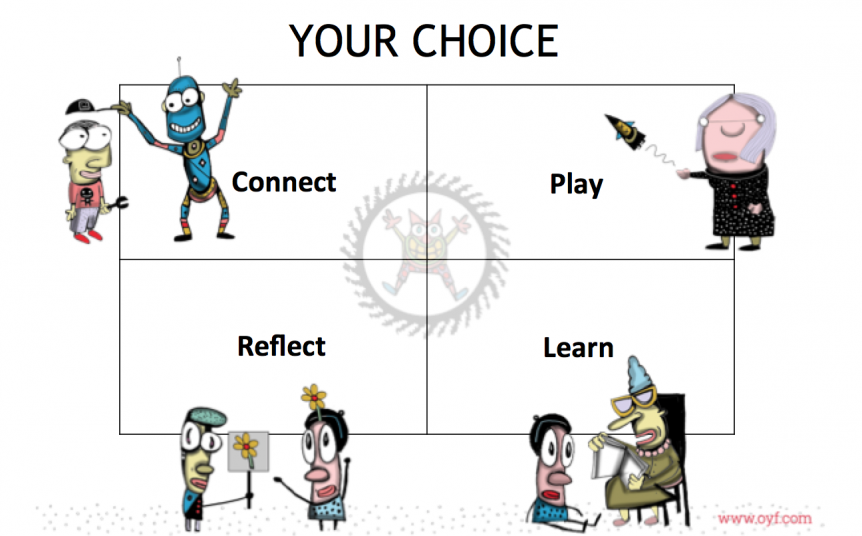
On Your Feet: Just Ask Them – Part II
Recently, I wrote about a common pitfall of presenting that almost guarantees your audience will start thinking about their next vacation while you bravely soldier on through your 82-slide deck: You forget about them. To remedy this common issue, I suggested getting curious about your audience’s needs in relation to your topic. Over the years of presenting to audiences large and small, we’ve played with other ways to get curious about your audience in order to meet their needs:
1. Assess the room in the moment
We were working with a presenter who was giving a high stakes presentation at a sales conference. He prepared his presentation without checking in with his audience. At the top of his presentation he said, “Here’s what I think I know about you,” sharing his assumptions about their reality in relation to the topic at hand. He then did something brave. He asked them, “What don’t I know?” He learned that there had been a recent disruption to the market. Stress levels were high. This presenter happened to know something about this disruption, so he switched off his projector, grabbed a flip chart, and gave an improvised presentation on this new, but much more relevant topic. He got one of the top scores at the sales conference that year.
2. Give your audience a choice
I just returned from presenting at a two-day conference of 25 different speakers, each presenting for 25 minutes. When I found out that I would be the last speaker on the last day, I saw it as an offer that couldn’t be ignored. When it was my turn, I stood up on stage and gave the audience a choice. They could either hear my talk, which would give them new ideas and content, or I could help facilitate a 25-minute session that would help them reflect on the previous 24 speakers to figure out how they could apply what they’d learned. I used the unscientific method of having them scream out which of these they wanted. New stuff squeaked out a win. I was happy to go either way, as long as I was serving their needs.
Another version:
We presented at a conference where we were on stage for multiple 15-minute intervals. We were prepared to deliver experiences and content on any of the four areas in the image above, and we gave the audience a choice. You may be saying to yourself, “Of course they can do that. They are improvisers!” We bet you’re an improviser, too. Think about your big topic. Can you slice it up? How about: How we Got Here, Why this Solution, Possible Impact, and How We’ll Get There. Even if your audience chooses all four, they’ll be leaning forward in their seats, invested something they co-created with you.
These methods require some flexibility and comfort with ambiguity, but the rewards make them worth experimenting with. What will you try to make your next presentation just what your audience needs?
